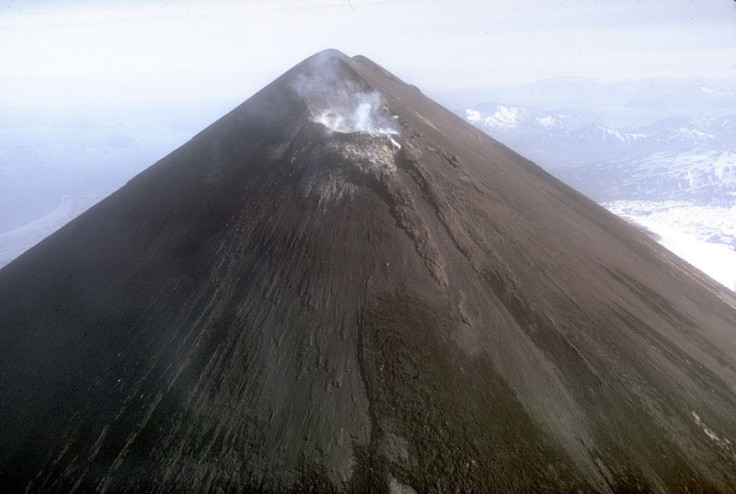Alaska’s Pavlof Volcano Disrupts Regional Air Travel, Puts Commercial Carriers On Alert

Alaska Airlines assured customers Tuesday that very few flights had been affected by activity from Cleveland Volcano, west of Dutch Harbor, and Pavlof Volcano, near Cold Bay.
“Alaska Airlines has not canceled or diverted any flights,” spokeswoman Marianne Lindsey said Tuesday evening. “However, our commuter partner PenAir, which operates an average of three flights a day for Alaska Airlines between Anchorage and Dutch Harbor, has canceled a dozen flights.” Lindsey added that the carrier was “continuing to watch and monitor the situation.”
Earlier Tuesday, Alaska Airlines’ CEO Ben Minicucci issued a statement also noting that the impact of the volcanoes had been minimal. “We will continue to closely monitor Mount Cleveland and Mount Pavlof for any changes that could affect service to Bethel, Adak or Dutch Harbor.”
The carrier operates an average of 125 daily flights to 20 destinations throughout the vast state of Alaska, though most do not fly over the remote Aleutian Islands where both volcanoes are located. The Alaska Volcano Observatory, or AVO, has put both Cleveland and Pavlof under aviation color code orange, one color below the highest code, red. The color system helps keep airlines abreast of any abrasive volcanic ash particles that could damage windows and block ventilation holes that cool jet engines.
“So far, we have seen ash clouds up to a height of 20,000-22,000 feet, which is well below the elevation of commercial airliners,” said Dr. Jeffrey T. Freymueller of the Geophysical Institute at the University of Alaska, Fairbanks. “The ash would need to go substantially higher than it has thus far to affect those flights.”
Like other active volcanoes in the Aleutian chain, Cleveland and Pavlof lie directly below the commercial airline flight path between North America and Asia. Indeed, some 90 percent of all airfreight between the two continents flies over Alaska airspace. Any ash cloud approaching 30,000 feet could cause major problems for commercial airlines, while regional carriers like Anchorage-based PenAir have already been affected because they fly at altitudes of between 15,000 and 20,000 feet.
“We know of reports of canceled flights by PenAir and some regional cargo carriers. These are propeller-driven aircraft that fly at altitudes potentially impacted by the ash,” Freymueller explained. “The affected area is approximately between Cold Bay and Sand Point on the Alaska Peninsula. So far there have been reports only of trace ash fall from some of the communities to the east of [Pavlof] volcano.”
AVO warned Tuesday that “more energetic explosions could occur without warning that could place ash clouds above 20,000 feet” at Pavlof Volcano. Pavlof is one of Alaska’s most active volcanoes, and has erupted an estimated 24 times since 1901. Whether the current flare-up will recede or continue to magnify remains to be seen.
Cleveland Volcano, meanwhile, has been relatively quite over the last few days “with nothing new to report,” Freymueller said. Because the 5,676-foot cone-shaped peak lies in a very remote area 939 miles southwest of Anchorage on the uninhabited Chunginadak Island, the human danger levels are low -- but so too are the monitoring tools. Cleveland has no real-time seismic network in place, and AVO warned Tuesday that it may not know about a large ash-producing event until several hours later, as it relies on satellite data, eyewitness reports and signals from a different volcano roughly 50 miles away.
© Copyright IBTimes 2024. All rights reserved.





















